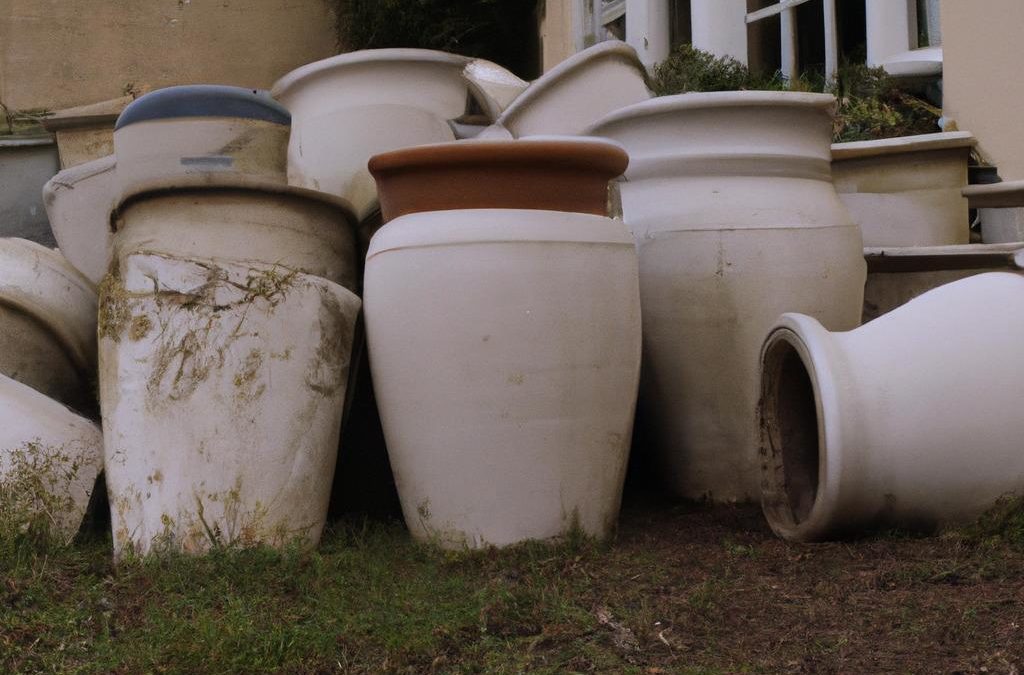When it comes to choosing a plant pot, two of the most popular options are ceramic and plastic. Both have their own set of pros and cons, and it can be difficult to decide which one is the best choice for your needs. In this article, we’ll explore the great debate between ceramic and plastic plant pots, taking a look at the pros and cons of each option, as well as some relevant quotes and case studies.
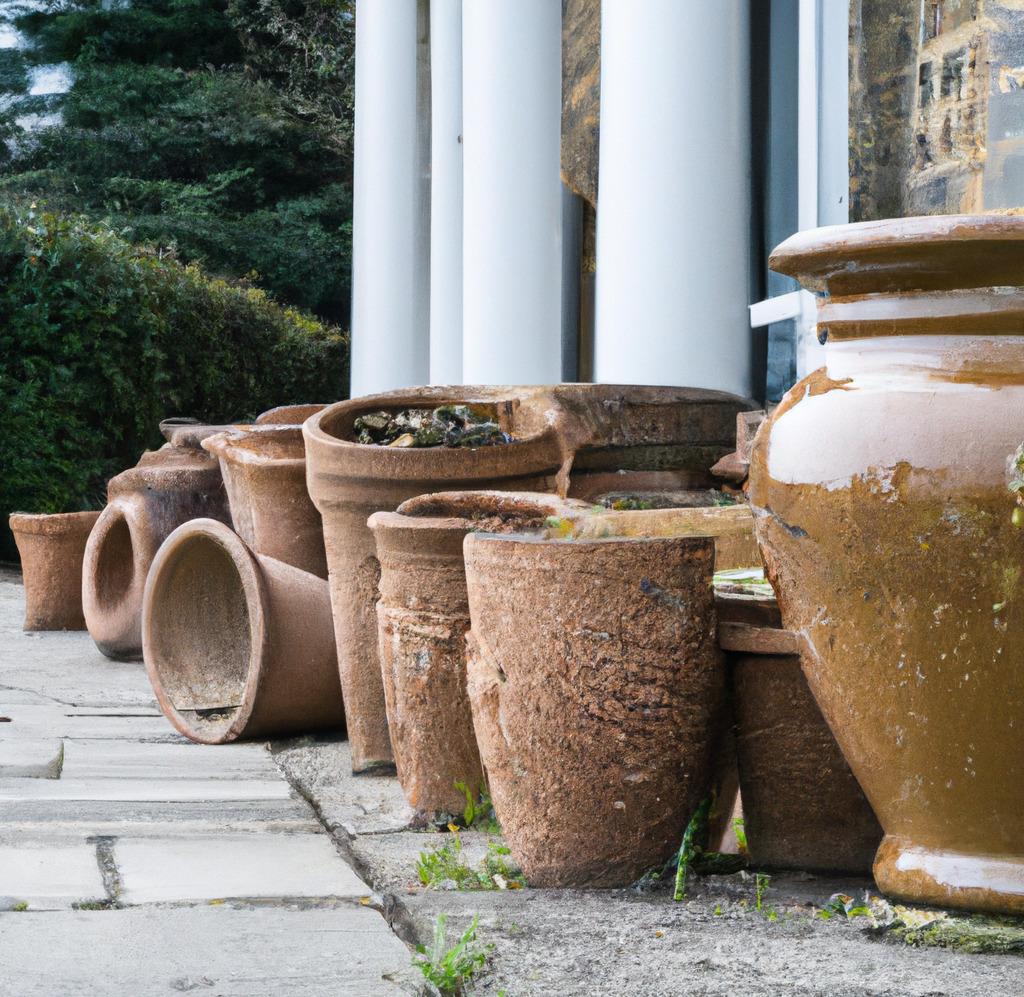
Pros and Cons of Ceramic Plant Pots
First, let’s start by looking at the pros of ceramic plant pots.
Pros:
- One of the biggest advantages of ceramic pots is their durability. They are made from clay and fired at high temperatures, which makes them resistant to cracking and breaking. This means they can last for many years, even with regular use.
- In addition to their durability, ceramic pots also have a timeless, classic look that can add a touch of elegance to any garden or indoor space.
- They come in a wide range of styles, from sleek and modern to rustic and antique, so you can find one that fits your personal aesthetic.
- Another pro of ceramic pots is their ability to regulate soil temperature. The porous nature of clay allows for air circulation, which helps to keep the soil at a consistent temperature and prevent overheating. This is especially important for plants that are sensitive to temperature fluctuations, as it can help to promote healthy growth.
Cons:
On the other hand, there are also some cons to using ceramic pots.
- One of the biggest drawbacks is their weight. Ceramic pots can be quite heavy, especially when they are filled with soil and plants. This can make them difficult to move around, especially if you have a lot of plants or a large garden.
- Ceramic pots are also prone to chipping and breaking if they are dropped or handled improperly. While they are generally quite durable, they can be fragile if they are not treated with care.
Pros and Cons of Plastic Plant Pots
In contrast, plastic plant pots have several pros.
Pros:
- One of the biggest advantages is their lightweight nature. Plastic pots are much easier to move around than ceramic pots, which makes them a good choice for those who have a lot of plants or a large garden.
- Plastic pots are also relatively inexpensive compared to ceramic pots, making them a budget-friendly option.
- They are available in a wide range of sizes, shapes, and colors, so you can easily find one that fits your needs.
- Plastic pots are also easy to clean and maintain. They can be wiped down with a damp cloth or rinsed off with water, which makes them a good choice for those who want a low-maintenance option.
Cons:
However, there are also some cons to using plastic pots.
- One of the biggest drawbacks is their environmental impact. Plastic is a non-biodegradable material, which means it can take hundreds of years to break down in the environment. This can contribute to pollution and waste, and can have negative impacts on wildlife and the ecosystem.
- In addition to their environmental impact, plastic pots also have a shorter lifespan compared to ceramic pots. They are prone to cracking and fading over time, which means they may need to be replaced more frequently.
Despite these drawbacks, plastic pots are still a popular choice for many gardeners. As The Old Farmer’s Almanac points out, “Plastic pots are convenient and relatively inexpensive, making them a good choice for container gardening.”
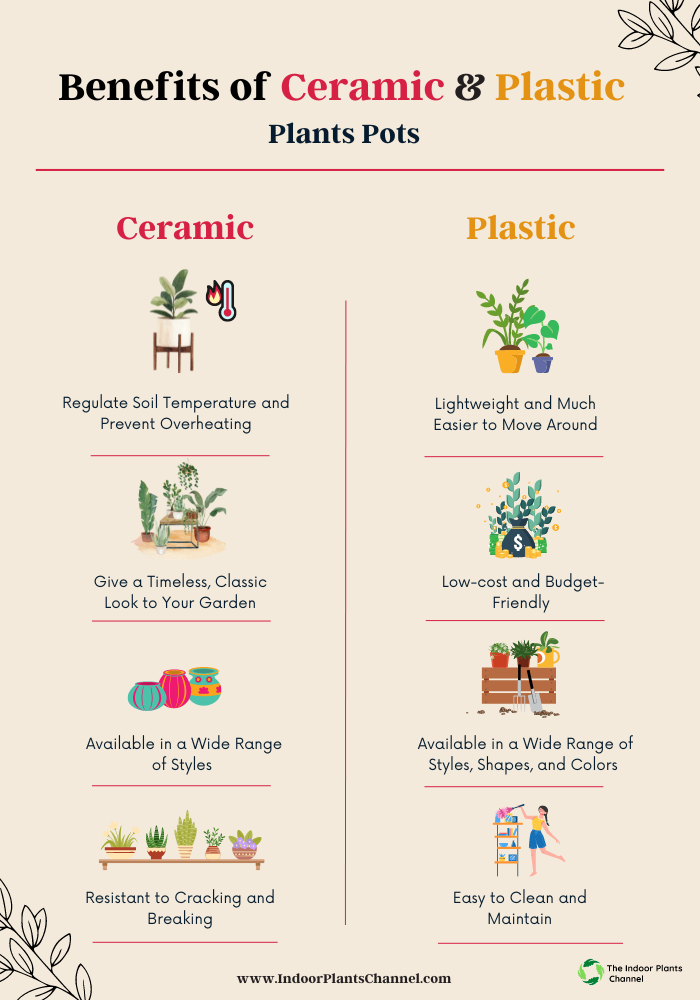
Which Is The Better Choice: Ceramic Or Plastic?
The answer ultimately depends on your personal needs and preferences. If you value durability and a classic look, ceramic pots may be the better choice for you. On the other hand, if you are looking for a lightweight, budget-friendly option, plastic pots may be more suitable.
In the end, both ceramic and plastic plant pots have their own set of pros and cons. It’s important to consider factors such as durability, weight, cost, and environmental impact when making a decision.

One way to approach the debate is to use a combination of both ceramic and plastic pots. For example, you could use ceramic pots for plants that are sensitive to temperature fluctuations or for plants that you want to keep long-term. Plastic pots could be used for plants that are temporary or for plants that are easy to care for.
Another option is to consider using biodegradable or eco-friendly pots made from materials such as coconut coir or bamboo. These pots can be more expensive than ceramic or plastic pots, but they have the added benefit of being environmentally friendly and biodegradable.
In the end, it’s important to choose the pot that best fits your needs and priorities. As the garden expert, Bonnie L. Grant points out, “The key to successful container gardening is choosing the right container for the job.” So, whether you choose ceramic, plastic, or another material, make sure to consider all of the factors before making a decision
Case Studies: The Debate Between Ceramic And Plastic Plant Pots
One way to further explore the debate between ceramic and plastic plant pots is to look at some relevant case studies and examples.
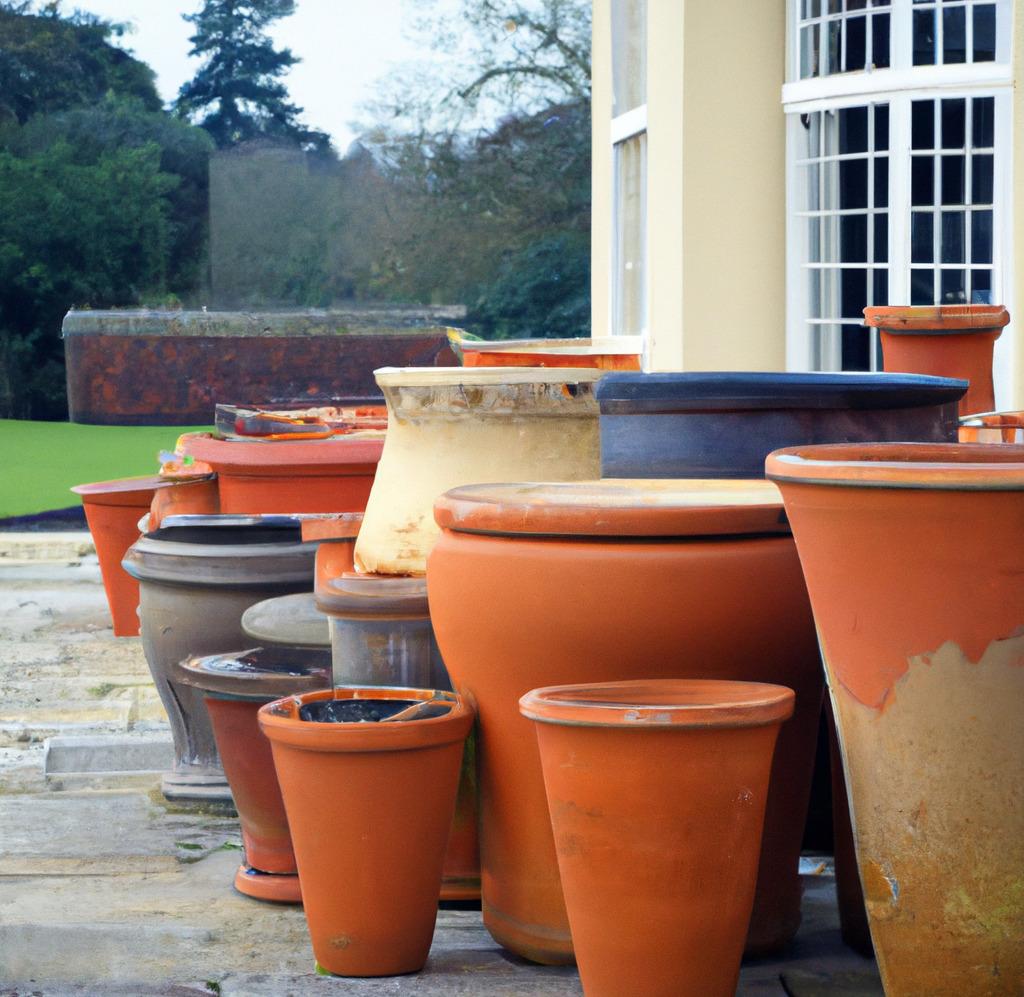
1. Performance Of Tomato Plants Grown In Ceramic Pots Versus Plastic Pots:
One study conducted by the University of California, Davis compared the performance of tomato plants grown in ceramic pots versus plastic pots. The researchers found that the tomato plants grown in ceramic pots had a significantly higher yield compared to those grown in plastic pots. They also found that the plants grown in ceramic pots had a stronger root system and were more resistant to pests and diseases.
The researchers attributed these results to the ability of ceramic pots to regulate soil temperature and provide better drainage compared to plastic pots. They concluded that, overall, ceramic pots are a better choice for growing tomatoes and other types of plants.
2. Performance Of Orchids Grown In Ceramic Pots Versus Plastic Pots:
Another example of the benefits of ceramic pots can be seen in the case of orchids. Orchids are a type of plant that is sensitive to temperature fluctuations and requires well-draining soil. Ceramic pots are a good choice for orchids because they can help to regulate soil temperature and provide the proper drainage that orchids need.
In contrast, plastic pots may not be the best choice for orchids because they can retain moisture and heat, which can lead to root rot and other problems. As orchid expert Charles Marden Fitch points out, “Orchids do best in clay pots, which are porous and allow excess water to drain away.”
These case studies illustrate the importance of considering the specific needs of your plants when choosing a pot. While ceramic pots may not always be the best choice for every type of plant, they can be a good choice for plants that are sensitive to temperature fluctuations or require well-draining soil.
In short, the debate between ceramic and plastic plant pots is a complex one that depends on a variety of factors. Both types of pots have their own set of pros and cons, and it’s important to consider things like durability, weight, cost, and environmental impact when making a decision. Ultimately, the best choice will depend on your personal needs and priorities, as well as the specific needs of your plants.
Best Plants For Ceramic Plant Pots
Many types of plants can thrive in ceramic pots.
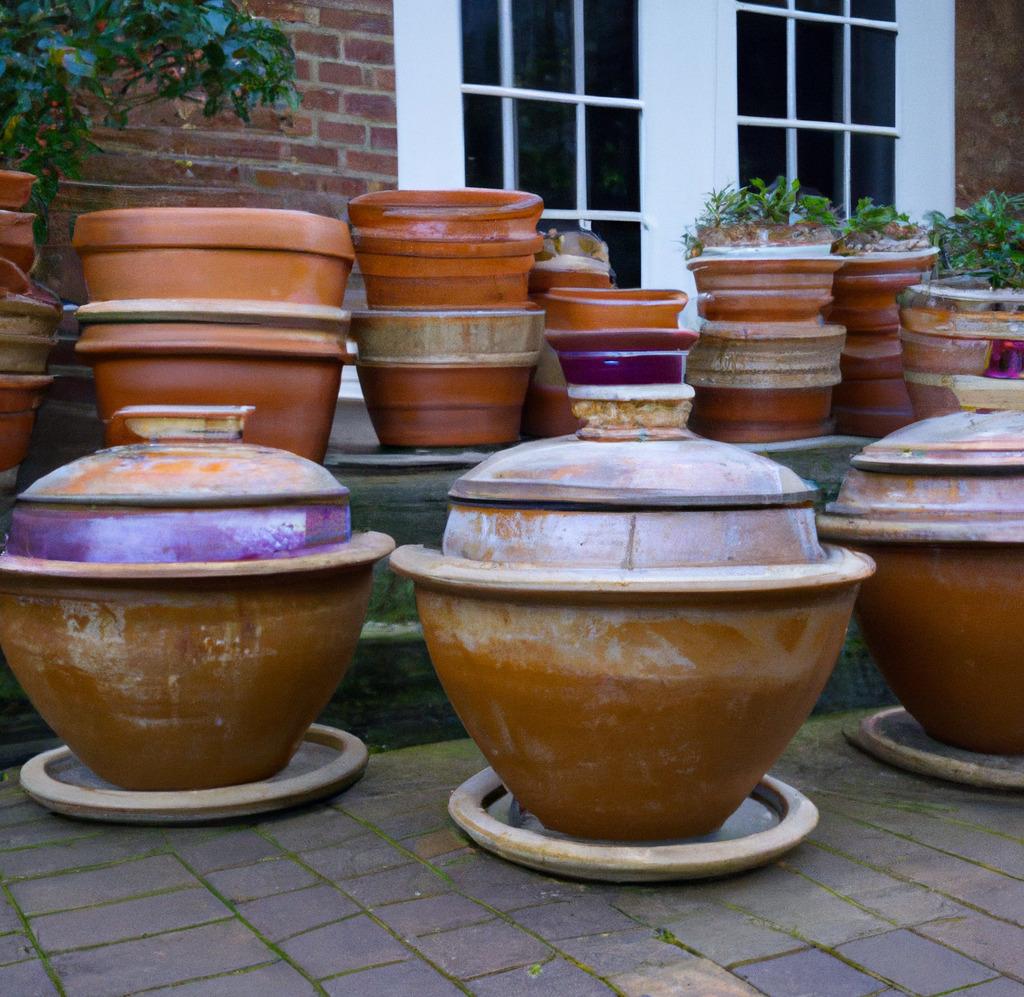
Here are a few examples:
1. Tomatoes:
As mentioned in the previous example, tomatoes can do well in ceramic pots because of their ability to regulate soil temperature and provide good drainage.
2. Orchids:
Orchids are sensitive to temperature fluctuations and require well-draining soil, making ceramic pots a good choice.
3. Succulents:
Succulents are drought-tolerant plants that thrive in well-draining soil. The porous nature of ceramic pots can help to prevent the soil from becoming too soggy, making them a good choice for succulents.
4. Herbs:
Many herbs, such as basil, oregano, and thyme, prefer well-draining soil and can do well in ceramic pots.
5. Houseplants:
Many houseplants, such as fiddle-leaf figs, snake plants, and spider plants, can thrive in ceramic pots. The timeless, classic look of ceramic pots can also add a touch of elegance to your indoor space.
It’s important to keep in mind that every plant has its own specific needs, so it’s always a good idea to do some research and choose a pot that meets the needs of your particular plant.
Best Plants For Plastic Plant Pots:
While plastic plant pots have some drawbacks compared to ceramic pots, they can still be a good choice for certain types of plants.
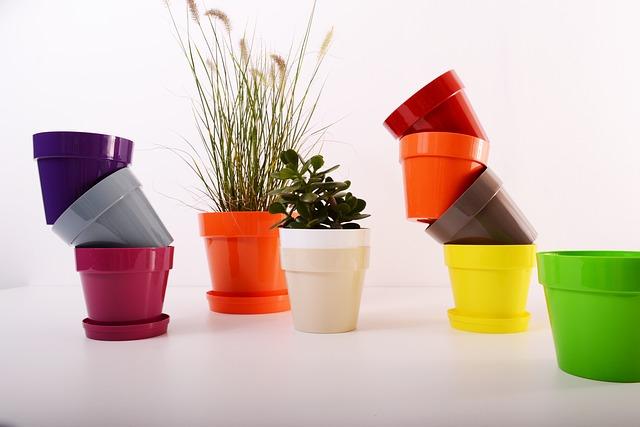
Here are some examples of plants that are well-suited for growing in plastic pots:
1. Annual Flowers:
Annual flowers are plants that only last for one growing season. Because they have a shorter lifespan, it may not be worth investing in a more expensive pot like ceramic. Plastic pots are a budget-friendly option for annual flowers and can work well for these types of plants.
2. Herbs:
Herbs are generally easy to care for and do well in small pots. Plastic pots are a good choice for herbs because they are lightweight and easy to move around.
3. Vegetables:
Some vegetables, such as tomatoes and peppers, can be grown in plastic pots. However, it’s important to keep in mind that these types of plants may benefit from the temperature regulation and drainage properties of ceramic pots.
4. Houseplants:
Many houseplants are well-suited for growing in plastic pots. These pots are lightweight and easy to move around, which is helpful for indoor plants.
5. Succulents:
Succulents are drought-tolerant plants that do well in small pots with good drainage. Plastic pots can be a good choice for succulents because they are inexpensive and easy to clean.
Keep in mind that every plant is different and may have specific care requirements. It’s always a good idea to research the specific needs of the plant you are considering before choosing a pot.
Frequently Asked Questions
- What are the main differences between ceramic and plastic plant pots?
“Ceramic pots are typically made from clay that has been fired in a kiln, while plastic pots are made from synthetic polymers. Ceramic pots are generally more durable and long-lasting, but they can be heavier and more expensive than plastic pots.” – Gardenista
- Are ceramic or plastic pots better for plants?
“Both ceramic and plastic pots have their pros and cons when it comes to growing plants. Ceramic pots offer good drainage and are more breathable, which can be beneficial for plants that require good air circulation. Plastic pots, on the other hand, are often lighter and more affordable, and they can also retain moisture better than ceramic pots.” – The Old Farmer’s Almanac
- Is it possible to recycle ceramic plant pots?
“Yes, ceramic pots can be recycled, but it’s important to note that the recycling process is more complex than recycling plastic pots. Ceramic pots must be ground down into small pieces before they can be recycled, and this process requires specialized equipment. However, many ceramic pot manufacturers have established recycling programs to make it easier for consumers to recycle their pots.” – Earth911
- Do plastic plant pots have any environmental impacts?
“Plastic plant pots are a convenient and affordable option for gardeners, but they do have some environmental impacts. Plastic pots are made from synthetic polymers that are derived from non-renewable resources, such as oil and natural gas. Additionally, plastic pots can take hundreds of years to break down in landfills, and they can contribute to plastic pollution in the environment if they are not properly disposed of.” – The Guardian
- Can ceramic plant pots be used indoors and outdoors?
“Yes, ceramic plant pots can be used both indoors and outdoors. However, it’s important to note that ceramic pots are more prone to cracking in extreme temperature changes, so they may not be the best choice for outdoor use in very cold or hot climates. Plastic pots are generally more flexible and less likely to crack in extreme temperatures.” – The Spruce
Conclusion:
In conclusion, the debate between ceramic plant pots and plastic pots is a complex one with valid arguments on both sides. While ceramic pots may be more aesthetically pleasing and have better drainage, they are also more fragile and expensive. Plastic pots, on the other hand, are more durable and cost-effective, but may not be as environmentally friendly. Ultimately, the decision between the two will depend on individual needs and preferences.
If you are someone who values aesthetics and is willing to invest in higher-quality pots, ceramic may be the way to go. If you are looking for something more practical and cost-effective, plastic pots may be a better fit. It is important to consider the pros and cons of each option and choose the one that best meets your specific needs and values.
It is also worth considering the environmental impact of your choice and trying to make the most sustainable choice possible. Whether you choose ceramic or plastic, the most important thing is to ensure that your plants are happy and healthy and that you enjoy the process of caring for them.
Michelle Wilde
Related posts
![]()
About Michelle Wilde
Michelle Wilde is a stay-at-home mom and avid plant lover. Armed with a post-graduate degree in Computer Science (no kidding!), she loves researching plants and landscapes. When she is not caring for her 4 kids, she spends time on her passion for plants. She blogs at www.indoorplantschannel.com, the trusted source for indoor plants.
Learn more
Subscribe
* You will receive the latest posts and updates about indoor plants!
Search
Recent Posts
Categories
- Beginner Guides (10)
- FAQ (206)
- General (2)
- How-To Guides (212)
- Indoor Plants (214)
- Pest Management (2)
- Plant Problem Solutions (4)
- Seasonal Growing (2)
- Specialized Environments (2)
- Specific Plant Care (3)
- Technical Growing (2)
